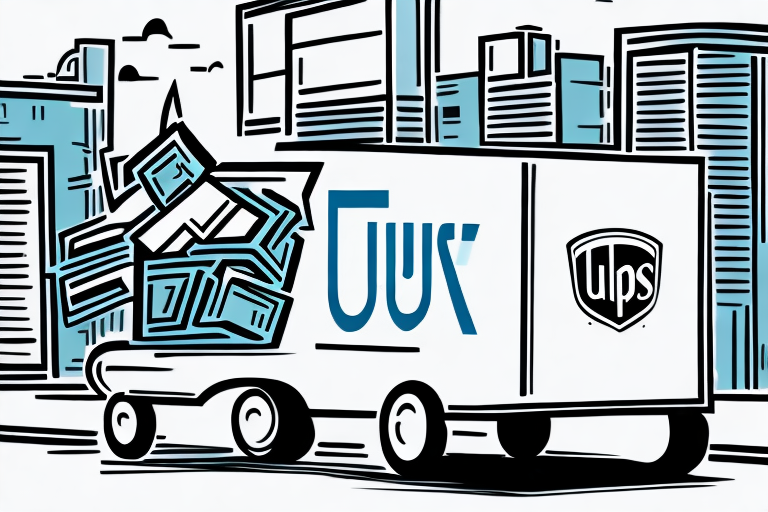Comparing FedEx SmartPost and USPS: Which is the Better Option?
Choosing the right shipping partner is essential for businesses that rely on efficient and cost-effective delivery services. FedEx SmartPost and USPS are two leading options, each offering unique advantages. This comprehensive comparison will help you determine which service aligns best with your business needs.
Overview of FedEx SmartPost and USPS
What is FedEx SmartPost?
FedEx SmartPost is a hybrid shipping solution that leverages both FedEx’s and USPS’s networks. FedEx handles the initial transportation of packages to USPS facilities, where they are then delivered to the final destination by USPS. This service is ideal for businesses shipping lightweight packages (up to 70 lbs) and seeking cost-effective delivery solutions.
What is USPS?
The United States Postal Service (USPS) is an independent agency responsible for providing postal services across the United States and its territories. USPS offers a variety of shipping options, including Priority Mail, First-Class Mail, and Parcel Select, catering to different business needs with affordability and reliability.
Shipping Rates and Cost Analysis
Shipping costs are a critical factor for businesses when choosing a delivery service. Both FedEx SmartPost and USPS provide competitive rates, but their pricing structures differ based on package weight, dimensions, and delivery speed.
FedEx SmartPost Pricing
FedEx SmartPost is generally more cost-effective for heavier packages. For instance, shipping a 5 lb package via SmartPost can be approximately $8-$12, depending on the destination. According to FedEx, SmartPost offers discounts for businesses with high shipping volumes.
USPS Pricing
USPS offers a range of pricing options. First-Class Mail is suitable for lightweight packages (up to 15.99 oz) with prices starting around $4, while Priority Mail starts at approximately $8 for packages up to 70 lbs. USPS also provides flat-rate boxes, which can be a cost-effective choice for shipping heavier items.
Cost Comparison
For packages under 1 lb, USPS typically offers more affordable rates. However, for packages over 5 lbs, FedEx SmartPost becomes more economical. Businesses shipping a mix of package sizes may benefit from using both services to optimize costs.
Delivery Times and Reliability
Timely delivery is paramount for customer satisfaction. Both FedEx SmartPost and USPS offer reliable services, but their delivery times vary based on the chosen shipping option.
FedEx SmartPost Delivery Times
FedEx SmartPost typically delivers packages within 5-7 business days. While this is longer than some FedEx services, it is comparable to USPS’s standard delivery times. The partnership with USPS ensures nationwide coverage, including rural and remote areas.
USPS Delivery Times
USPS offers faster delivery options, such as Priority Mail Express, which guarantees overnight to 2-day delivery to most U.S. locations. Priority Mail generally delivers within 2-3 business days, making it a faster option compared to FedEx SmartPost for urgent shipments.
Reliability
Both services maintain high reliability standards. According to the USPS Performance Reports, on-time delivery rates for Priority Mail exceed 90%. FedEx SmartPost also boasts reliable delivery performance, particularly for businesses with consistent shipping volumes.
Tracking and Customer Support
Effective tracking and responsive customer support are essential for managing shipments and addressing issues promptly.
Tracking Capabilities
FedEx SmartPost provides end-to-end tracking, allowing businesses to monitor packages from origin to final delivery. This real-time tracking is facilitated through both FedEx and USPS systems.
USPS offers robust tracking features with its online tools. Customers can track packages via the USPS website or mobile app, with updates throughout the shipping process.
Customer Support
Both FedEx SmartPost and USPS offer multiple channels for customer support, including phone, email, and online resources. However, FedEx SmartPost is often praised for more personalized and efficient support, while USPS has faced criticism for longer wait times and less responsive service.
Pros and Cons of FedEx SmartPost vs USPS
FedEx SmartPost
- Pros:
- Cost-effective for heavier packages
- Comprehensive tracking
- Money-back guarantee for on-time delivery
- Cons:
- Longer delivery times for lighter packages
- Slightly higher costs for packages under 5 lbs
USPS
- Pros:
- Affordable rates for lightweight packages
- Faster delivery options available
- Extensive network of post offices
- Cons:
- Slower delivery for heavier packages
- Customer support can be inconsistent
Conclusion: Choosing the Right Service for Your Business
Both FedEx SmartPost and USPS offer valuable shipping solutions tailored to different business needs. FedEx SmartPost is ideal for businesses that frequently ship heavier packages and prioritize cost-effectiveness, while USPS is better suited for those requiring faster delivery times and affordable rates for lightweight shipments.
To optimize your shipping strategy, consider the following:
- Package Weight and Size: Use USPS for lighter packages and FedEx SmartPost for heavier items.
- Delivery Speed: Choose USPS Priority Mail for faster delivery needs.
- Tracking Requirements: Both services offer reliable tracking, but FedEx SmartPost provides more comprehensive real-time updates.
- Cost Considerations: Analyze your shipping volume and package dimensions to determine the most cost-effective option.
Ultimately, the best choice depends on your specific business requirements. By leveraging the strengths of both FedEx SmartPost and USPS, you can enhance your shipping efficiency and meet your customers’ expectations effectively.








